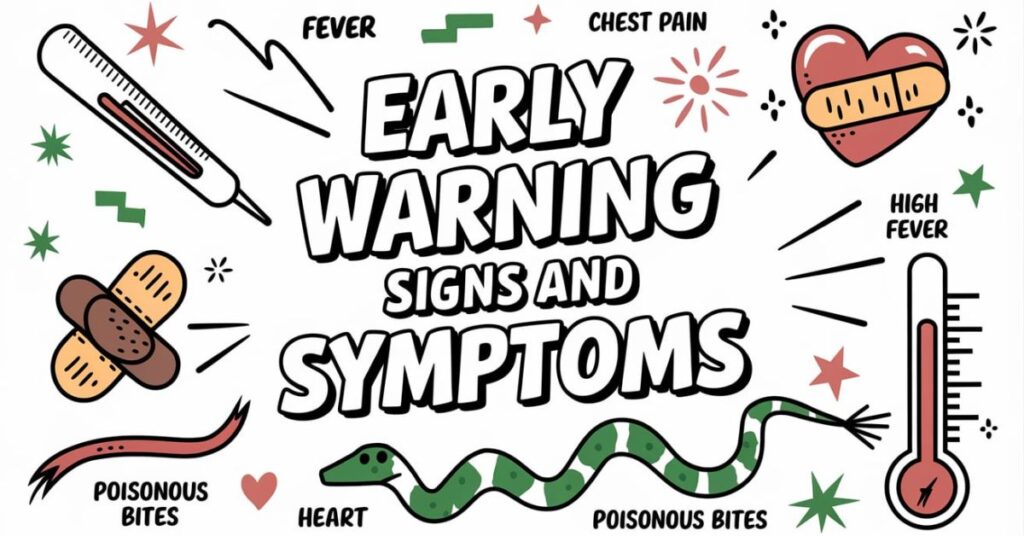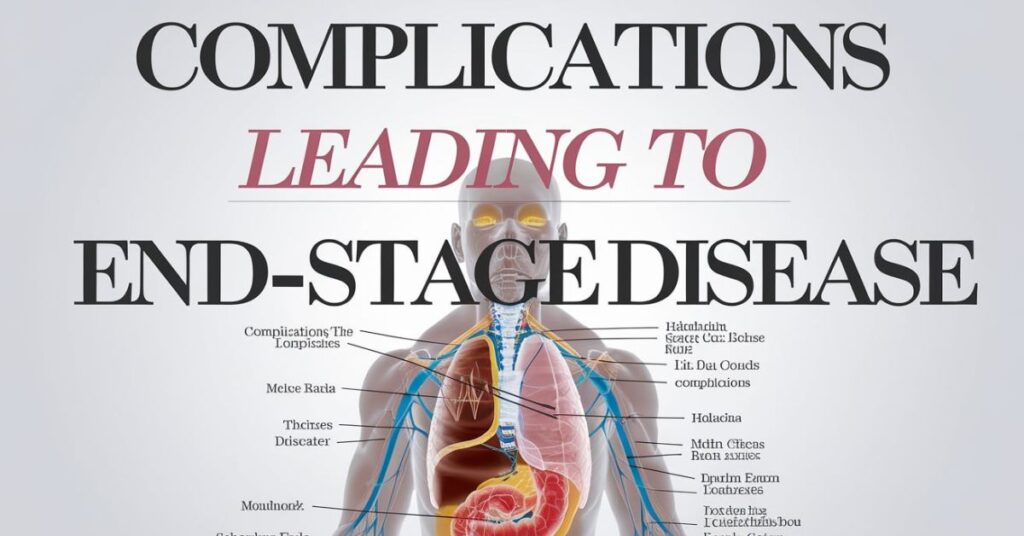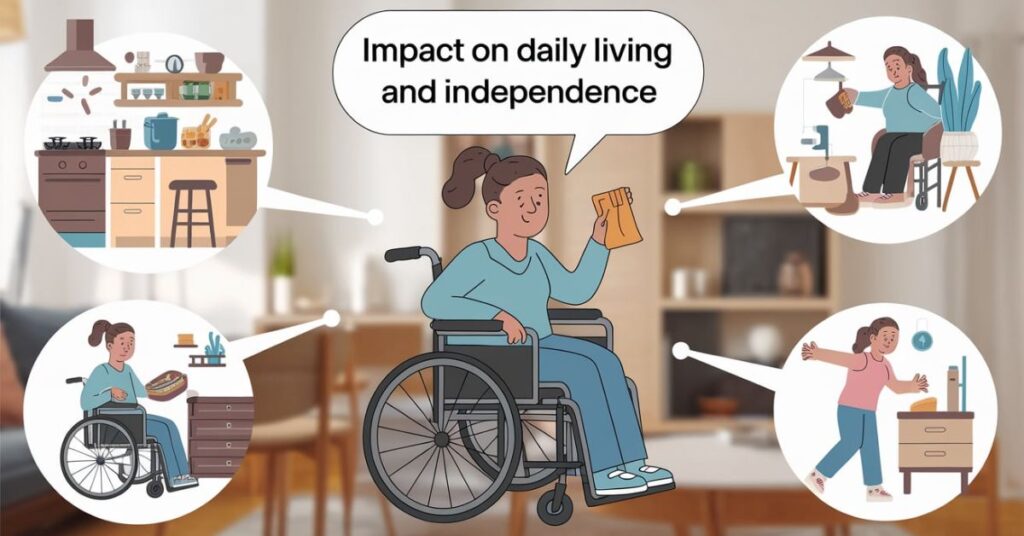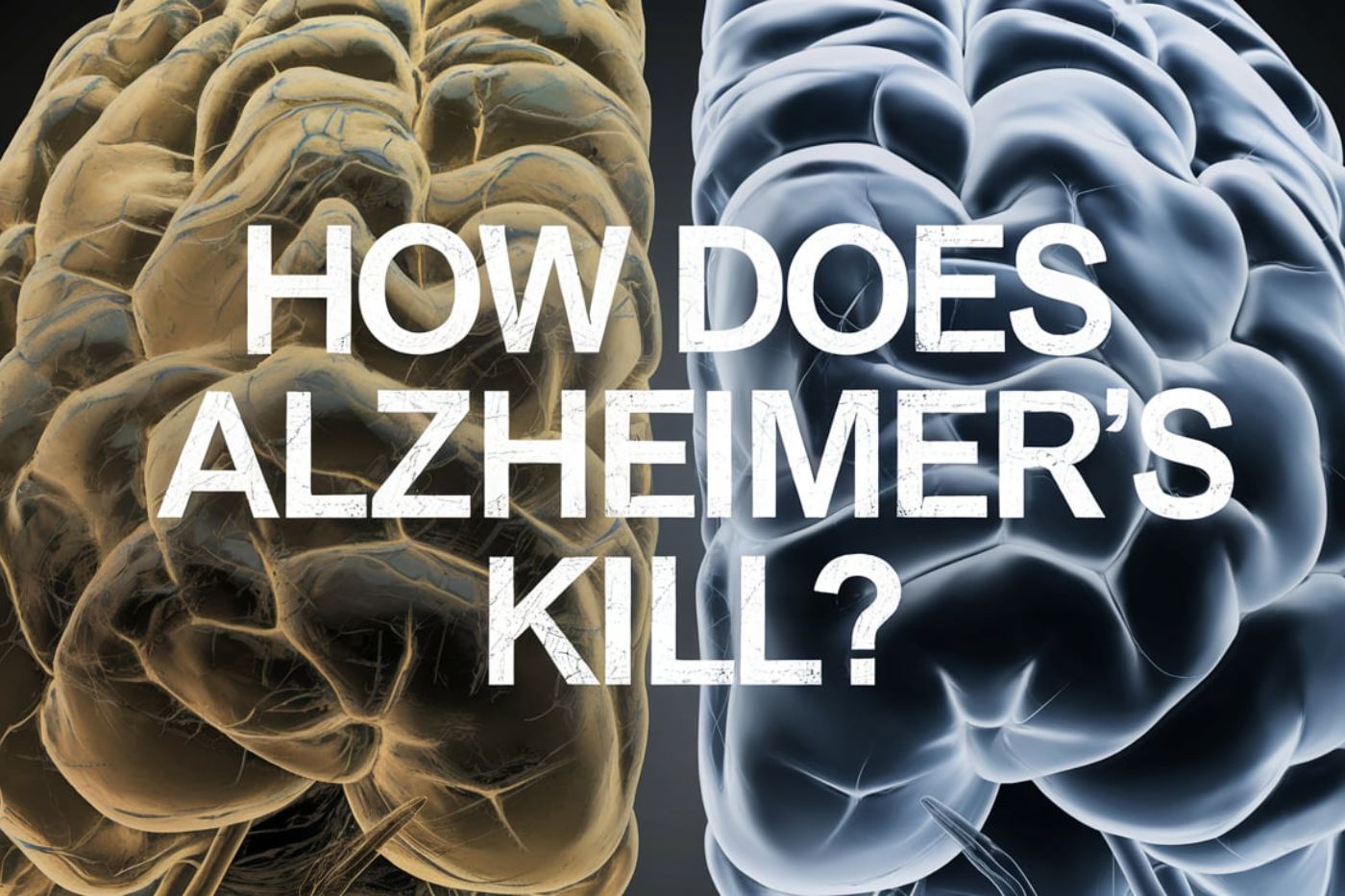Alzheimer’s disease is developed every in 65 seconds in someone in America. This progressive brain disorder slowly erases memories and thinking skills, eventually robbing people of their ability to carry out simple tasks. The devastating journey from diagnosis to death affects not just patients but entire families.
Think of your brain as a complex city where billions of neurons work together like busy citizens. In Alzheimer’s disease, this bustling metropolis gradually falls into decay. Streets get blocked by protein buildups, communication networks break down, and vital services slowly grind to a halt. This invisible battle happens silently for years before symptoms appear.
Understanding how Alzheimer’s disease leads to death helps us grasp its true impact. While many know about memory loss, fewer understand how this condition systematically breaks down the brain’s control over essential bodily functions. Let’s explore the complex journey from early symptoms to final stages.
Understanding the Basics of Alzheimer’s Disease
The story of Alzheimer’s disease begins with subtle changes in the brain’s structure. Brain cells start dying decades before the first symptoms appear, like a house slowly deteriorating from hidden water damage. These changes primarily affect memory and thinking at first, but they eventually spread to control centers for basic bodily functions.
Scientists have discovered that abnormal protein deposits called amyloid plaques and tau tangles accumulate in the brain. Think of these proteins as toxic trash piling up in the brain’s streets. Just as garbage buildup would disrupt a city’s daily operations, these deposits interfere with normal brain cell communication and eventually lead to cell death.
The cognitive decline in Alzheimer’s follows a predictable pattern, though the speed varies among individuals. Early symptoms might be as subtle as misplacing keys more often, while later stages can leave a person unable to recognize loved ones or care for themselves.
Early Warning Signs and Symptoms

Most people associate Alzheimer’s disease with memory loss, but the early signs can be more varied and subtle. Like a computer experiencing random glitches, the brain begins showing small malfunctions that many mistake for normal aging. Changes in mood or personality might appear before memory problems become obvious.
The earliest symptoms often involve short-term memory difficulties and mild cognitive decline. Someone might repeat questions, forget recent conversations, or have trouble learning new information. It’s like trying to save files on a hard drive that’s beginning to fail – new information just doesn’t stick like it used to.
Daily tasks become increasingly challenging as the disease progresses. A person who once managed complex projects might struggle with simple calculations, or someone who loved cooking might forget familiar recipes. These changes signal the disease’s growing impact on various brain regions.
The Progressive Nature of Brain Damage
Brain disease progression in Alzheimer’s follows a relentless path through different regions. Starting in the hippocampus, the brain’s memory center, damage spreads like a slow-moving storm across neural territories. Each affected area brings new challenges for patients and their caregivers.
The cognitive skills deteriorate in a somewhat predictable sequence, though every patient’s journey differs slightly. Think of it like a city losing power district by district – first affecting luxury services, then essential functions. Scientists now understand that this progression relates directly to how brain cells die in specific patterns.
Communication between neurons becomes increasingly difficult as the disease advances. Imagine trying to make a phone call in a city where phone lines are gradually being cut – eventually, even emergency services become unreachable. This breakdown in neural communication explains why symptoms worsen over time.
Impact on Daily Living and Independence
The loss of independence in Alzheimer’s disease often begins subtly. A person might start having trouble managing their finances or following their favorite recipes. These small changes signal the beginning of more significant challenges ahead.
Memory and cognitive skills continue declining, making routine tasks increasingly difficult. Someone who once drove confidently might get lost in familiar neighborhoods, or a skilled professional might struggle with basic work responsibilities. These changes often force difficult decisions about continued independence.
Family members often notice personality changes before major memory problems appear. A normally patient person might become easily frustrated, or someone outgoing might withdraw from social activities. These behavioral shifts reflect the disease’s impact on emotional regulation centers in the brain.
The Physical Progression of Alzheimer’s
| Stage | Primary Symptoms | Impact on Daily Life | Typical Duration |
| Early | Mild memory loss, confusion | Minor adjustments needed | 2-4 years |
| Middle | Significant memory issues, behavior changes | Regular assistance required | 2-10 years |
| Late | Severe cognitive decline, physical symptoms | Full-time care needed | 1-3 years |
In its later stages, Alzheimer’s disease affects physical functions beyond memory and thinking. The brain’s control over basic bodily systems begins to fail, leading to problems with walking, swallowing, and other essential functions. This physical decline marks a critical turning point in the disease’s progression.
Brain disease complications become increasingly serious as control centers for vital functions deteriorate. Patients might develop difficulties with balance, leading to falls, or struggle with swallowing, increasing the risk of pneumonia. These physical challenges often lead to serious medical complications.
The body’s natural protective reflexes gradually weaken as more brain cells die. Simple actions like coughing when food goes down the wrong way become impaired, making patients vulnerable to infections and other complications.
Complications Leading to End-Stage Disease

The final stages of Alzheimer’s disease bring profound physical changes. As the brain disease advances, patients become increasingly vulnerable to life-threatening complications. Their weakened immune systems struggle to fight off even minor infections.
Cognitive decline reaches its peak during this stage, leaving patients completely dependent on caregivers. The brain can no longer coordinate basic functions like swallowing, breathing, and maintaining heart rhythm. These failures create a cascade of serious medical challenges.
Many patients develop aspiration pneumonia when food or liquids enter their lungs due to impaired swallowing reflexes. Think of it as a city’s flood control system failing – what should be prevented now becomes a dangerous possibility.
Understanding The Role of Brain Cell Death
The progression of Alzheimer’s disease directly relates to the death of brain cells. Scientists have discovered that this cell death follows a predictable pattern, starting in memory centers and spreading to areas controlling vital functions.
When brain cells die, they don’t regenerate like skin or blood cells. Each lost neuron represents a permanent reduction in the brain’s capability. It’s similar to losing pieces of a complex puzzle – eventually, the picture becomes unrecognizable.
The accumulation of toxic proteins speeds up this cellular destruction. These proteins act like rust in a machine, gradually breaking down essential components until the whole system fails. This process explains why symptoms worsen over time.
Medical Complications in Late-Stage Alzheimer’s
| Complication | Cause | Risk Level | Prevention Strategies |
| Pneumonia | Impaired swallowing | Very High | Careful feeding, positioning |
| Falls | Balance problems | High | Safety equipment, supervision |
| Infections | Weakened immunity | High | Hygiene, preventive care |
| Malnutrition | Eating difficulties | Moderate | Special diets, feeding assistance |
| Dehydration | Forgetting to drink | Moderate | Regular fluid monitoring |
The late stages of Alzheimer’s disease often bring multiple medical challenges. Understanding these complications helps families and caregivers prepare for difficult decisions ahead.
A weakened immune system makes fighting infections increasingly difficult. Even minor illnesses can become life-threatening as the body’s natural defenses fail. Regular monitoring becomes crucial during this stage.
Mobility issues increase the risk of blood clots and pressure sores. Like a car left unused, the body’s systems begin to fail without regular movement and activity.
Impact on Essential Body Functions

As Alzheimer’s disease progresses, it affects the brain’s ability to regulate crucial bodily functions. The autonomic nervous system, which controls breathing, heart rate, and digestion, begins to malfunction.
Memory loss and confusion extend beyond cognitive functions to affect basic survival instincts. Patients might forget to eat, drink, or respond to physical discomfort. This loss of basic self-preservation instincts requires constant monitoring.
The breakdown of neural pathways affects muscle coordination and strength. Simple tasks like sitting up or holding objects become increasingly difficult as the brain loses its ability to send clear signals to muscles.
Managing End-Stage Symptoms
The final phase of Alzheimer’s disease requires specialized care focused on comfort and dignity. Caregivers must monitor vital signs, manage pain, and prevent complications while ensuring the patient’s comfort remains the top priority.
Cognitive decline reaches its most severe stage, often leaving patients unable to communicate their needs. Caregivers must learn to read subtle signs of discomfort or distress, becoming interpreters of non-verbal cues. This challenge requires patience and careful observation.
The role of brain disease management shifts from treatment to palliative care. The focus becomes maintaining quality of life and preventing unnecessary suffering through careful symptom management and emotional support.
Factors Affecting Disease Progression
- Early diagnosis and treatment can slow the progression
- Genetics play a significant role in disease development
- Lifestyle factors influence the rate of decline
- Age of onset affects the disease trajectory
- Overall health status impacts survival time
Treatment Options and Their Impact
Modern medicine offers various approaches to managing Alzheimer’s disease, though no cure exists. Current treatments focus on slowing the progression and managing symptoms to maintain quality of life for as long as possible.
Brain cells continue to die despite treatment, but medications can help preserve remaining function. Think of these treatments as support beams in a weakening structure – they don’t rebuild, but they help maintain what’s left.
Research continues to explore new therapeutic approaches targeting the underlying causes of cognitive decline. Scientists work to understand how to prevent or reverse the accumulation of harmful proteins in the brain.
Research and Future Directions

Understanding Disease Mechanisms
Scientists are uncovering new details about how Alzheimer’s disease develops and progresses. Research focuses on identifying early markers that might predict who will develop the condition.
Genetic studies reveal complex interactions between multiple genes and environmental factors. This knowledge helps researchers develop more targeted treatments that might slow or stop disease progression.
Advanced imaging techniques now allow scientists to track changes in living brain cells, providing crucial insights into disease progression.
Developing New Treatments
Current research explores multiple promising approaches to treating Alzheimer’s disease. From targeting toxic proteins to boosting brain cell protection, scientists attack the problem from various angles.
Clinical trials test new medications that might alter the course of the disease. These studies represent hope for future patients and their families as researchers work toward more effective treatments.
Gene therapy and stem cell research offer exciting possibilities for future treatments. These cutting-edge approaches might one day help restore damaged brain tissue.
Prevention Strategies
Understanding risk factors helps researchers develop prevention strategies for Alzheimer’s disease. Lifestyle modifications might reduce risk or delay onset in susceptible individuals.
Diet, exercise, and cognitive engagement play crucial roles in brain health. Research suggests that maintaining an active lifestyle might help protect against cognitive decline.
Early intervention becomes increasingly important as we learn more about disease progression. Identifying and treating risk factors early might prevent or delay symptom onset.
The Role of Caregivers
Caregivers become essential partners in managing Alzheimer’s disease. Their observations help medical teams adjust treatments and respond to changing needs.
The physical and emotional demands on caregivers increase as the disease progresses. Support systems and respite care become crucial for maintaining caregiver health and effectiveness.
Understanding the disease trajectory helps caregivers prepare for future challenges. Education and support groups provide valuable resources for this difficult journey.
Read this Blog: MonkeyGG2: Explore a World of Games and Socialize with Players
Final Insights
Alzheimer’s disease remains one of medicine’s most challenging conditions, affecting millions worldwide. Its progression from mild memory problems to complete dependence illustrates the devastating impact of neurological disease.
Understanding how the disease kills helps families and caregivers prepare for the journey ahead. While current treatments can’t stop the progression, they can help manage symptoms and maintain quality of life.
Hope lies in ongoing research and new treatment approaches. As we learn more about this complex disease, better treatments and possibly preventive measures will emerge.
Frequently Asked Questions
How long do people typically live after an Alzheimer’s diagnosis?
Average survival ranges from 4-8 years after diagnosis, though some live up to 20 years.
Can Alzheimer’s be prevented?
While no guaranteed prevention exists, healthy lifestyle choices may reduce risk.
Is Alzheimer’s genetic?
Some forms have genetic components, but most cases involve multiple risk factors.
What’s the difference between Alzheimer’s and normal aging?
Alzheimer’s causes more severe and progressive decline than normal aging.
Are there any promising new treatments?
Several experimental treatments show promise in clinical trials, offering hope for future therapies.

Zade Smith is a Proficient writer on TechsBlip, dedicated to delivering high-quality content that bridges the gap between medical research and accessible, reader-friendly guidance. With a keen interest in promoting healthy lifestyles and disease prevention, Zade’s writing offers expert insights, actionable tips, and evidence-based information to help readers make informed decisions about their health and wellness

